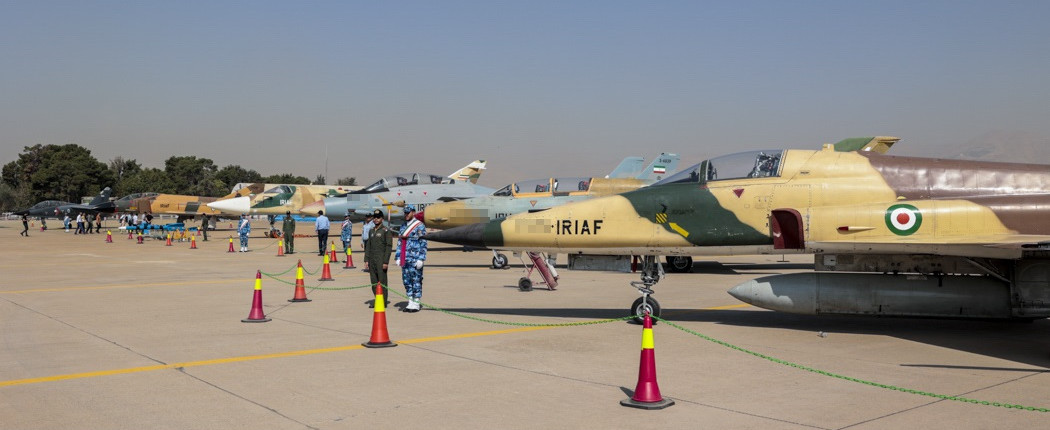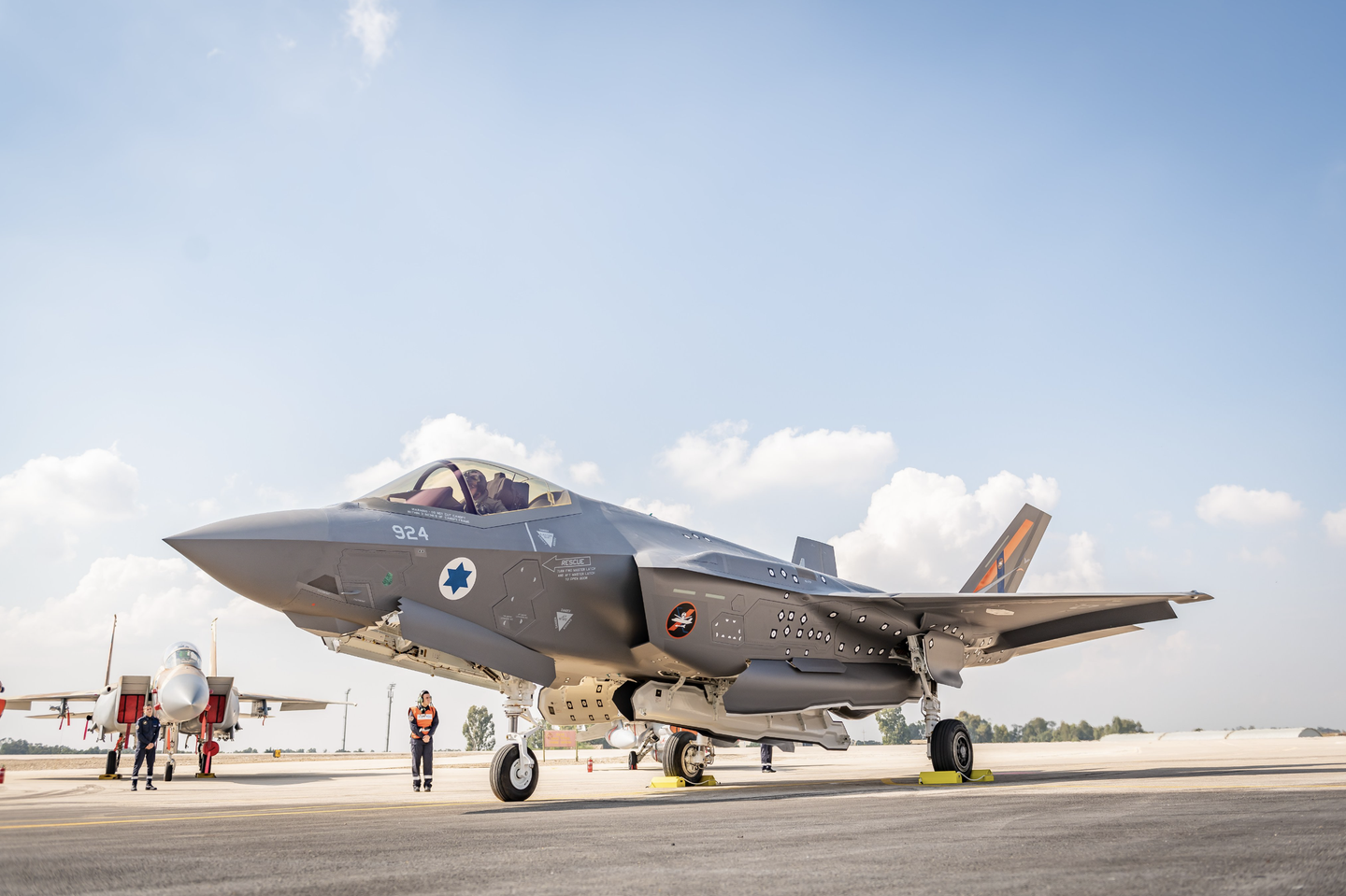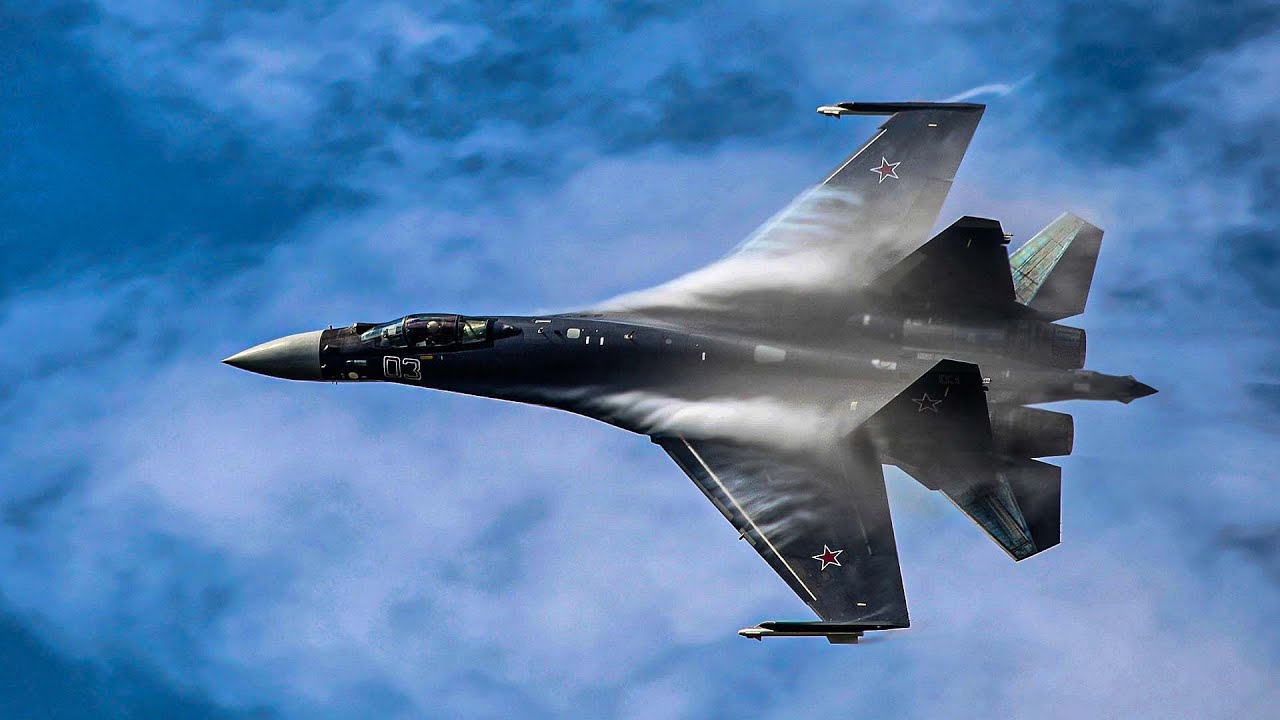A senior US official disclosed that Iranian pilots trained in Russia to fly Sukhoi Su-35 Flanker-E multirole jets and suggested that Iran might begin receiving these fighters pretty soon.
White House National Security Council spokesman John Kirby, on December 9, cited US intelligence assessments to level allegations against Russia of offering Iran “an unprecedented level of military and technical support that is transforming their relationship into a full-fledged defense partnership.”
According to Kirby, Russia and Iran are considering setting up a drone assembly line in Russia to support Moscow’s war in Ukraine, while Russia trained Iranian pilots on the Su-35 fighters.
“These fighter planes will significantly strengthen Iran’s air force relative to its regional neighbors,” Kirby said.
The recent revelation by Kirby follows an announcement by the commander of the Iranian Air Force (IRIAF) in September that the IRIAF plans to acquire Su-35 fighter jets from Russia, shortly after reports started emerging of hundreds of Iranian unmanned aerial vehicles (UAVs) arriving in Russia.
“This issue is on the agenda, and we hope to be able to get these 4++ generation fighters in the future,” Brigadier General Hamid Vahedi, commander of the IRIAF, told Borna news agency on September 4.
Last year, there were speculations that the Su-35Es initially produced for Egypt could be sold to Iran. The deal with Egypt tanked after the US threatened Cairo with sanctions under its Countering America’s Adversaries Through Sanctions Act (CAATSA).
Acquisition of Russian-made Su-35 fighter jets would represent a significant upgrade to Iran’s aerial combat capability, which currently mainly comprises the Cold War-era US-made F-4 Phantom IIs, F-14 Tomcats, and F-5E/F Tiger IIs and domestically duplicated versions thereof. All of these were inherited after the Islamic Revolution of 1979 and are complicated to sustain.

Besides that, Iran has a small number of Soviet-made MiG-29 Fulcrum fighters and Su-24 bombers, the French-made Mirage F1s, and the export version of Chinese-made Chengdu J-7 called the F-7, which is a license-built version of the Soviet MiG-21 fighter.
The introduction of Su-35s, one of Russia’s most sophisticated fighters, will bring unprecedented improvement to the Iranian Air Force’s strength. Most importantly, it will provide Iran with a 4.5-generation aircraft capability.
However, the real question is whether these Su-35 fighters can protect Iran’s nuclear sites from Israel’s F-35I Adir fifth-generation stealth fighters, which the Israeli Air Force (IAF) has been continuously improving for a potential future strike against Iran and its nuclear facilities.

Israeli media reports claimed in June that the IAF extended the range of its F-35 stealth fighter jets to fly to Iran without needing mid-air refueling. This means these fighters will no longer have to rely on the IAF’s fleet of just seven Boeing 707 tankers for refueling to reach Iran.
If true, this is a significant development considering a growing concern about the survivability of traditional refueling jets in or near contested airspace.
Kirby’s recent revelations about Iranian pilots training on Su-35s in Russia spurred discussions of how the 4.5-generation Flanker-E will fare against the 5th-generation F-35 stealth fighter.
The Flanker Will Not See The Stealthy F-35 Coming
In general, the discussions in the Western press have centered around the theme that while the Su-35 is more maneuverable than the F-35, having advantages in within-visual range (WVR) combat, the F-35 is mainly developed for Beyond Visual Range (BVR) combat.
So, being a stealth fighter equipped with highly advanced sensors that offer exceptional battlefield awareness, the F-35 would see the Su-35 coming from afar before the Flanker-E could see the F-35.
This way, the F-35 could fire its air-to-air missile toward Su-35, destroying the Flanker with its pilot going down without knowing who hit him.
The Su-35 is equipped with the Irbis-E passive electronically scanned array (PESA) multi-mode radar. According to official data, it can detect typical aerial targets at a range of up to 200 kilometers in the normal volume search mode. Typical aerial targets are generally assumed to have a Radar Cross Section (RCS) of 3 m².
While in a cued search mode, the detection range can be extended up to 350-400 kilometers.

To get an appropriate estimate of the Irbis-E’s possible detection range for an F-35, the EurAsian Times consulted Colonel Konstantinos Zikidis of the Hellenic Air Force (HAF), formerly a Deputy Commander at the HAF Telecomms and Electronics Depot (ETHM).
Zikidis explained that considering Irbis-E’s official data, its detection range against a standard target of 1 m² RCS becomes 152 kilometers.
Zikidis further noted that normal volume search mode typically offers a 50% probability of detection (Pd) of a target, while tracking a target requires a Pd of 90%. Based on that, the Irbis-E’s tracking range for a standard target of 1 m² RCS should be 95 kilometers.
The RCS of an F-35 stealth aircraft is believed to be 0.01 m². According to Zikidis, a Su-35 equipped with an Irbis-E radar should be able to detect an F-35 at 48 kilometers and track it at 30 kilometers.
“It is obviously too late to launch any kind of missile at such distance, taking into account that the F-35 would have detected and tracked the Su-35 much earlier,” he told EurAsian Times.
Beware Of Su-35’s Superb Agility!
An F-35’s detection range for a Su-35 is believed to be around 150 kilometers, meaning it will have a lot of time to generate a firing solution to shoot down the latter.
However, it is also essential to consider the superb maneuverability of a Su-35, coupled with the various counter-measures that it could be equipped with, such as a Radar Warning Receiver to detect the AIM-120 AMRAAM radar and other emissions, possibly a Missile Approach Warning system, a chaff dispenser, an intelligent jammer for deception jamming, and maybe even a towed decoy.
If the Su-35 detects the missile and manages to evade it, the F-35 will have given up its approximate locale, and the Flanker can then fire a missile in the general direction of the F-35.
Also, the Irbis-E, because of its ability to rotate, offers the Flanker-E a much broader ‘look’ angle of 120 degrees off the centerline of the jet instead of the usual 60 degrees, which can be tactically very advantageous to perform a ‘beaming maneuver’ to evade detection by an enemy fighter.
As EurAsian Times discussed earlier, a beaming maneuver involves a fighter turning 90 degrees away (perpendicular) from an enemy fighter to have a near-zero radial velocity concerning the enemy aircraft.
All current fighter radars are known to use the Doppler shift to measure a target’s relative velocity. They filter out the low relative velocity objects like ground clutter or a ‘beaming fighter’ that is not moving towards or away from the enemy radar.
However, the issue is that while performing a beaming maneuver, the fighter jet would lose its radar picture of the enemy it is trying to evade.
Even worse, any radar-guided missile fired from the now-beaming fighter will not be able to receive mid-course updates. Consequently, its chances of a kill will reduce, particularly if fired initially at long range.
This is where the Irbis-E’s ability to rotate comes in. It offers a far greater field of view and enables lower detectability for the Su-35 due to enhanced situational awareness for the pilot in case of beaming maneuvers.
So, a Su-35 pilot can track the missiles already fired in the general direction of the F-35 with its radar looking sideways and update them accordingly.

Also, Colonel Zikidis notes that for BVR combat engagements, standard Russian practice is to fire two missiles, one with active radar, followed by the second with infrared guidance a few seconds later, which could worsen the situation for the F-35.
Therefore, the F-35 may have to turn around if it misses in its first attempt, in which case it will be even more vulnerable because the RCS of its rear section is not as low as the front.
For these reasons, an F-35 pilot must want to make it near impossible for the Flanker-E to escape, for which the missile must be fired when the Su-35 is within the missile’s no escape zone (NEZ). While actual NEZ values for AIM-120 are kept secret, as per open sources, it is around 30 kilometers.
This means an F-35 would have to wait until the Su-35 is around 30 kilometers before firing its missile. However, it is essential to bear in mind that the mission of the F-35 would not be to fight the Su-35 but to carry out air-to-ground strikes against Iran’s high-value targets, such as nuclear facilities.
“In real life, if an F-35 on a stealthy mission would detect a Su-35, most possibly it would turn away and return to base to fight another day. On a strike mission, you wouldn’t appreciate the company of a supermaneuverable enemy fighter. After all, the F-35 was designed to be a strike aircraft, as its original name implies (JSF), not a dogfighter,” said Colonel Zikidis.
He further pointed out that the F-35 might not be alone in an actual situation. Considering recent US operations, there could be airborne radars to provide an overall picture and other fighters nearby, such as the F-15 Eagles, F-15E Strike Eagles, or the F-16 Fighting Falcons, for engaging in air-to-air combat.
However, in that case, it will no longer remain a ‘stealth’ mission.
Challenge From IRST Systems And VHF-Band Radars
Discussions favoring the Su-35, mostly in Russian and Iranian media, argue that there are other ways of circumventing the F-35’s stealth capabilities, such as infrared search and track (IRST) systems and VHF-band radars.
The IRST system detects an aircraft based on its infrared (IR) signature, which comprises the heat generated from engines and the frictional heating between the air, the nose, and the leading edges, which become hot as the aircraft cuts through the air at high speeds.
An IRST looks for temperature differences generated by the thermal radiations of an aircraft flying at high speed against colder ambient air.
Any aircraft flying into the air unavoidably emits thermal radiation, and if it generates enough temperature difference against the cold background, it can be detected by IR sensors.
IRST technology is entirely passive, meaning it does not give away the location of the aircraft it is mounted on. Unlike search radars, which emit radio waves if the pilot uses the radar in active mode to detect the enemy airplane, IRST systems cannot be jammed electronically.
According to a simulation conducted by Colonel Zikidis and his colleagues, an F-35 target could be detected 30-35 kilometers from the front and 70-100 kilometers from the rear using an IRST system such as the OLS-35 of Su-35 at high altitude in a clear atmosphere.
One or more Su-35s can share these detections over the data link to triangulate the target’s position.
The detection range of IRST systems is larger from the rear because the back end of the F-35’s powerful F135 jet engine is known to emit huge amounts of infrared energy.
Also, as discussed earlier, the F-35 may be forced to turn around if it cannot shoot down the Flanker on the first attempt. In this case, the F-35 may try to escape using its afterburner, and “it would be detected even from farther away,” noted Colonel Zikidis.
This means the Flanker(s) would have a better chance of defeating an F-35 from behind, so the best tactic would be to wait until the F-35 starts returning and then attack it from behind.
Experts have long contended that Russian-made VHF (Very High Frequency) radars pose a significant threat to stealth or very-low observable (VLO) targets such as American-made F-35 aircraft.
As discussed earlier by EurAsian Times, Iran could also use the Russian-made 3D VHF AESA 1L119 NEBO SVU radar for early warning and alert against the F-35 aircraft.

VHF band radars typically operate between one and three meters wavelengths. Electromagnetic radiation is known to scatter from bodies smaller than its wavelength, a phenomenon called Rayleigh scattering.
The critics of the F-35 point out that the aircraft’s nose, inlets nozzle, and junctions between fuselage, wings, and stabs will present as Raleigh regime scattering centers, as they are smaller than the two-meter band favored by Russian VHF radar designers.

However, the VHF radars usually lack sufficient accuracy to guide a missile to a target due to their relatively long wavelength. The Russian designers reportedly aim to provide enough accuracy in a VHF radar to indicate the general vicinity of low RCS targets.
Therefore, the VHF-band NEBO SVU can cue the Irbis-E radar onboard the Su-35, enabling a narrower search and, thus, a longer detection range, as discussed earlier.
Colonel Zikidis told the EurAsian Times that the NEBO SVU’s detection range for a target of 2.5 m² RCS flying at an altitude of 10,000 meters is 270 kilometers, and the F-35’s RCS in the VHF band has been estimated to be 0.25 m².
Based on that, the F-35 could be detected by the NEBO SVU at approximately 152 kilometers, according to Colonel Zikidis, which is a significant distance.
- Contact the author at tanmaykadam700@gmail.com
- Follow EurAsian Times on Google News




